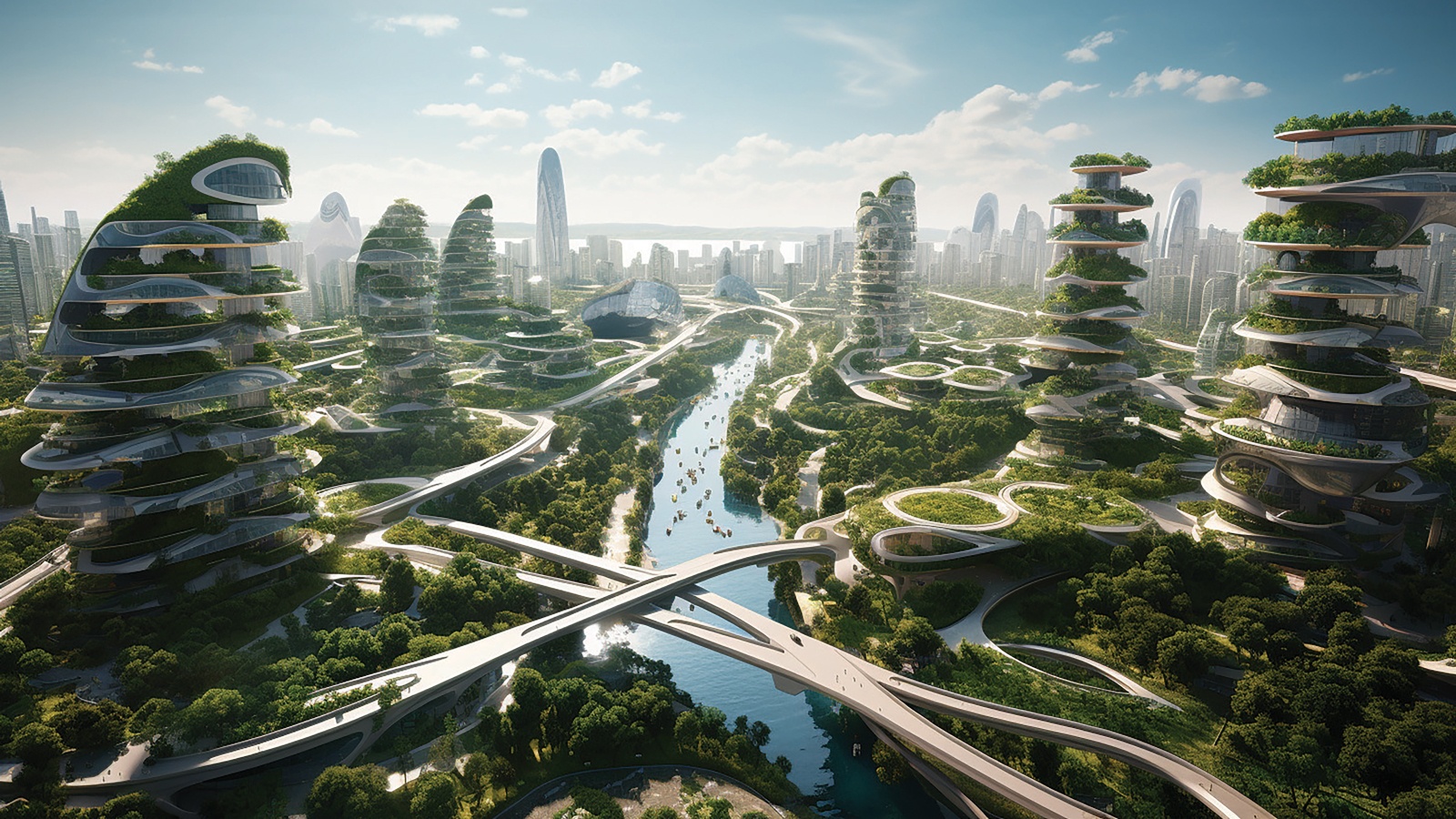AI is being used to shape the built environment
Architecture TechnologyPosted by admin on 2024-08-13 05:52:16 |
Share: Facebook | Twitter | Whatsapp | Linkedin Visits: 205

Ideas for iconic buildings and gravity-defying structures have traditionally been the mainstay of architects, but recent advancements in artificial intelligence (AI) have for the first time given machines the ‘creative’ power to hallucinate strange, hybrid and other-worldly architectures.
Instagram feeds are filled with highly realistic images of AI-generated buildings both striking and surreal: glass-bubble pods embedded in lush green hillsides; an exquisite interior cut from the inside of a geode rock; a façade draped in the architectural equivalent of linguine. The possibilities are intriguing, yet also hard to envision in the real world.
Trained on massive datasets of images and their descriptions, software such as DALL·E 2, Midjourney and Stable Diffusion require only a couple of lines of text prompt to produce wild and unconventional ideas for architecture in a matter of seconds.
Architects have been early adopters of the technology, using it to speed up design iteration, inject new ideas into project development and automate time-consuming tasks. Some have claimed it will give rise to a new architectural language and typologies.
But the technology also has ethical implications: machine-generated images are trained on the work of existing designers, raising copyright concerns, and AI models have been shown to regurgitate social stigmas. Some design jobs are being lost to machines as firms struggle to compete on speed and cost, raising questions over architects’ ability to keep hold of the creative reins as the technology evolves.
“Architects who don’t adapt to AI technology will be in danger and they rightfully should be,” says architectural designer Tim Fu, who compares generative AI (GenAI) to technological disruption in the early 1980s when computer-aided design (CAD) software triggered a backlash from architects reluctant to move away from pen and paper. “Those people were in fear of being replaced and eventually they were. We can very quickly imagine how that will also be the case with AI,” he adds.
Artificial playgrounds
Architects have been dabbling with AI for a few years and a significant 41% of practices are now using it on at least some of their projects, according to a survey published earlier this year by the Royal Institute of British Architects (RIBA).
Des Fagan, head of architecture at Lancaster University and member of RIBA’s expert advisory group on AI, says the profession is currently “going through an R&D phase” and while future AI efficiency gains remain unproven, “the assumption is they will be major”.
According to the survey, architects’ most common use of AI (selected by 70% of those who said they have adopted AI) is for early design-stage visualisations, which typically means using text-to-image GenAI software.
Search
Categories
Recent News
- Goldmine Finance Kabalagala branch Completed
- Designer of World’s Tallest Building Wants to Turn Skyscrapers Into Batteries
- Milan Design Week Opens with Events and Exhibitions at Salone del Mobile and Across the City
- Le Chateau d O residence commences construction in Kampala Uganda
- Construction Restarts on Worlds Tallest Skyscraper
- AI is being used to shape the built environment
Popular News
- Le Chateau d O residence commences construction in Kampala Uganda
- Designer of World’s Tallest Building Wants to Turn Skyscrapers Into Batteries
- Construction Restarts on Worlds Tallest Skyscraper
- Goldmine Finance Kabalagala branch Completed
- Milan Design Week Opens with Events and Exhibitions at Salone del Mobile and Across the City